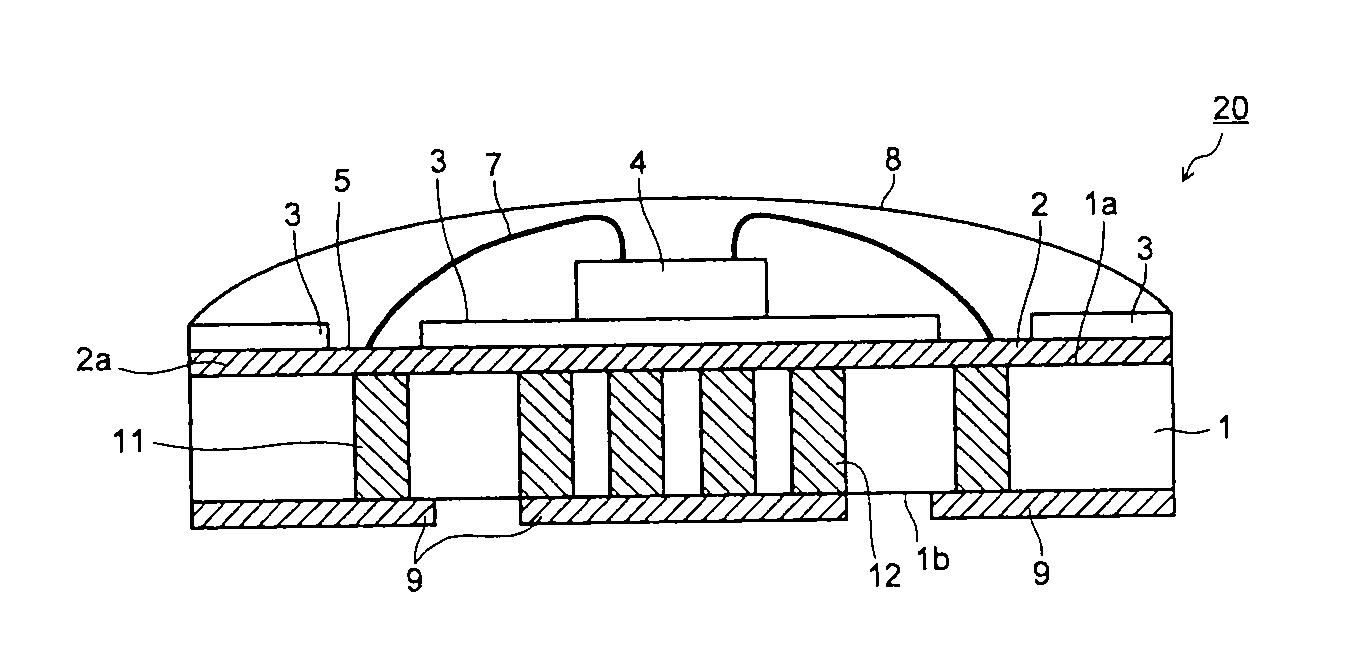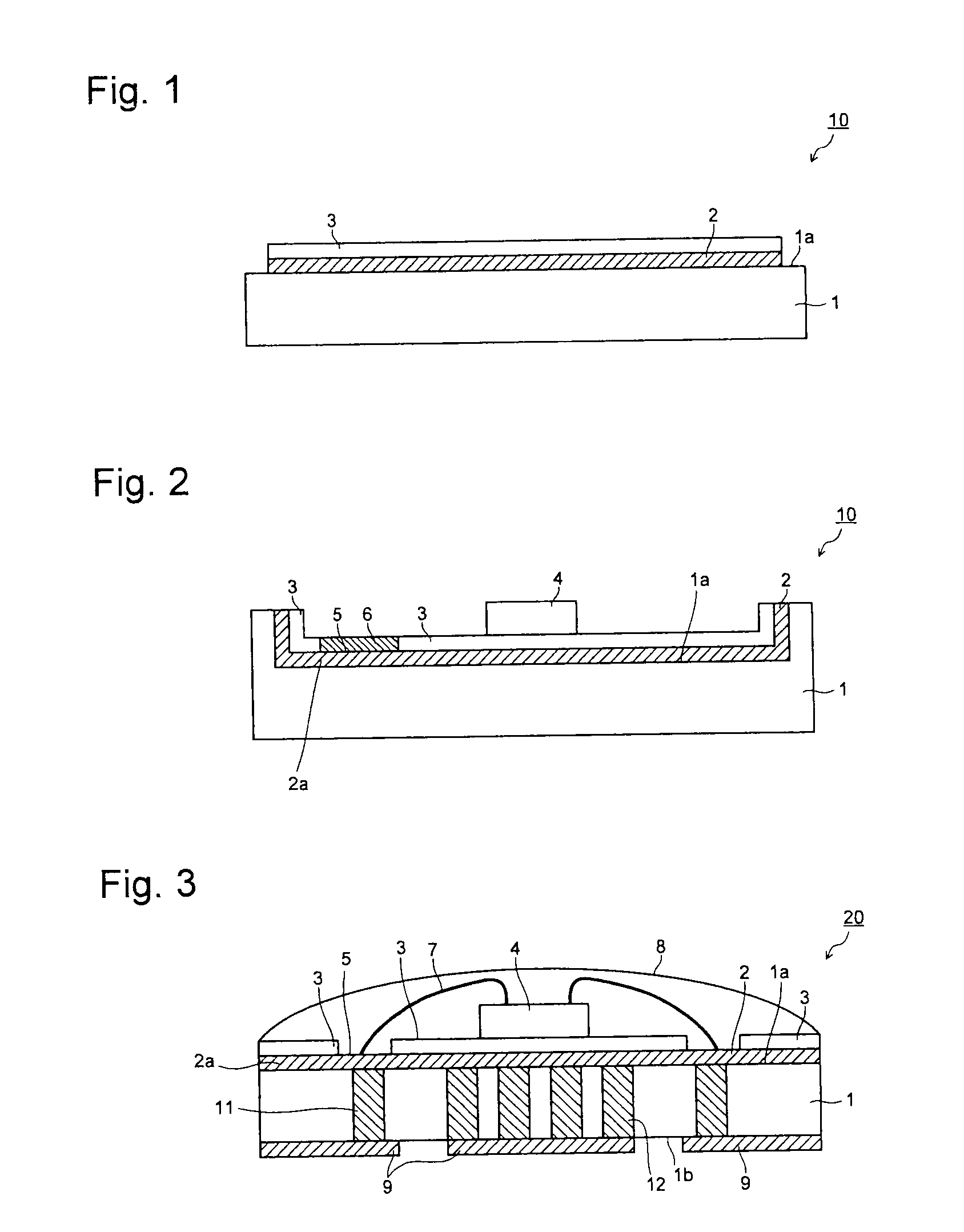Substrate for mounting light-emitting element and light-emitting device
a technology of light-emitting elements and substrates, which is applied in the direction of layered products, transportation and packaging, chemical instruments and processes, etc., can solve the problems of difficult products to employ such a method, easy corrosion of silver, and deterioration of optical reflectance, so as to prevent corrosion of silver, maintain luminous efficiency, and prevent deterioration of reflection layer reflectan
- Summary
- Abstract
- Description
- Claims
- Application Information
AI Technical Summary
Benefits of technology
Problems solved by technology
Method used
Image
Examples
examples
[0083]Now, the present invention will be described in further detail with reference to Examples.
[0084]In each of Examples 1 to 59, glass to form a vitreous insulating layer was prepared. That is, glass raw materials were blended and mixed so that the respective components of SiO2, B2O3, ZnO, Al2O3, MgO, CaO, SrO, BaO, R2O (Li2O, Na2O, K2O), TiO2 and ZrO2 would constitute a composition (mol %) shown in Tables 1 to 7, and this raw material mixture was put into a platinum crucible and melted at from 1,500 to 1,600° C. for 60 minutes. Then, the molten state glass was cast and cooled. The obtained glass was ground for from 20 to 60 hours by a ball mill made of alumina by using water as a solvent to obtain a glass powder.
[0085]The average particle size D50 of the obtained glass powder was measured by means of SALD2100 manufactured by Shimadzu Corporation, and in each case, D50 was within a range of from 1 to 3 μm. Further, the softening point Ts (unit: ° C.) of each glass powder was measu...
PUM
 Login to View More
Login to View More Abstract
Description
Claims
Application Information
 Login to View More
Login to View More - R&D
- Intellectual Property
- Life Sciences
- Materials
- Tech Scout
- Unparalleled Data Quality
- Higher Quality Content
- 60% Fewer Hallucinations
Browse by: Latest US Patents, China's latest patents, Technical Efficacy Thesaurus, Application Domain, Technology Topic, Popular Technical Reports.
© 2025 PatSnap. All rights reserved.Legal|Privacy policy|Modern Slavery Act Transparency Statement|Sitemap|About US| Contact US: help@patsnap.com


